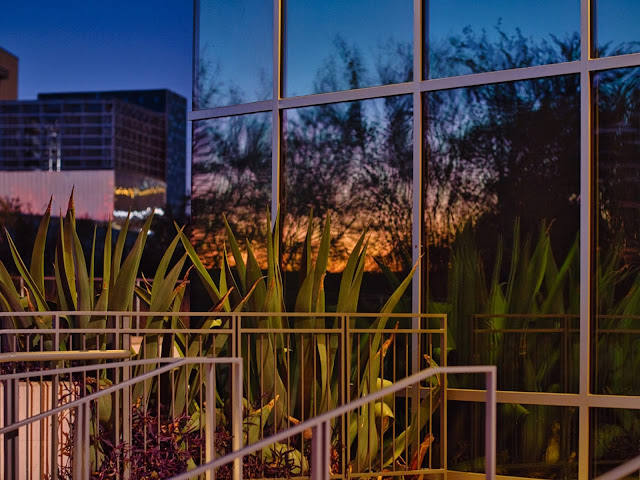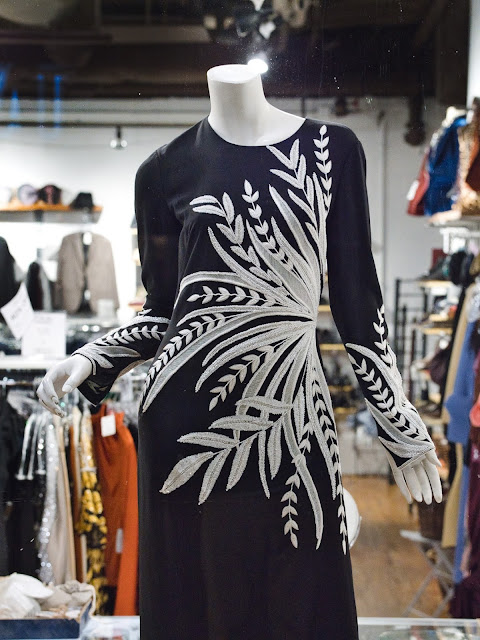shot from the Pfluger Pedestrian Bridge with a GH5 and the Sigma Contemporary 56mm f1.4.If you've looked through the images I generally post here and on Instagram you'll know that my taste skews, emphatically, toward focal lengths that have an angle of view of a 50mm lens on a full frame (24x36mm) camera, or longer. With the exception of images from crazy masters/artists like William Klein I have little to no patience for photographs shot with wider angle lenses that are generally jammed packed with tiny details. Photos that drag your eyes all over the place, desperately trying to decipher what the hell the photographer had in mind when he shot the image. Is there a main subject I should be looking for? Well, where is it? It's almost as if wide angle fans were indoctrinated by whoever created "Where's Waldo?" and have been trying to mystify their audiences ever since.
I've been cruising around the web today, while trying to take it easy, and I'm a bit distressed at all the blogs and vlogs that are, themselves, mystified that Sigma would have the audacity to introduce a 65mm lens. The implication being that we are in dire need of yet another 35mm or 28 mm instead? Geez, why not end your wide angle suffering (or increase your visual torture of others) by just getting a 12mm lens and cropping from time to time. With something that wide you could give up taking responsibility for rational composition altogether and just pick and chose your frame well after the fact. You could change your mind and re-crop every time you look at whatever collage of subject matters you've thrown together in a photograph. Who would care?
Real photographers are able to make up their minds at the time of exposure as to what needs to be included and what's best left out. They know that images are so much more enjoyable when there's a subject to the work instead of a collection of endless datum. In fact, it's almost a responsibility.
Most of the people talking down Sigma's new 65mm f2.0 lens are busy mentioning how, for them, the universe revolves around the 35mm lens; a focal length I regard with no small amount of disdain. If the world really needed one more iteration of the 35mm lens you wouldn't know it from looking through the nearly endless selection of 35mm lenses at B&H, Amazon and Adorama. The photo world is clogged up with that ubiquitous and boring focal range. That, and the 28mm are among the most over-rated focal length choices in the world. Sure, I get that you might be working in a small space and can't back up. I get that use. But if you are out in the wide world and that's the one you're still choosing to use ---- well, I just don't get it.
With the announcement of the 65mm from Sigma there are now, I think, just two products in that focal length for full frame cameras. Sure, you can buy a zoom lens and pick the exact focal length you want but that's an argument you could use about any focal length between 24 and 200 these days. What you are really getting, with the 65mm, is a 50mm lens with just a bit more discretion and selective integrity. It's a focal length that says, "Let's look at the main course." instead of a focal length that says, "f8 and be there. Hail Mary! Hold it up high and we'll get the whole park in the frame!!!"
And according to reviewers Sigma has made a single focal length lens product that should outperform even the best zoom lenses at that particular focal length while adding some speed to the mix.
As I understand it (with no confirmation or exact data) Sigma is following Apple's lead. You know about the Apple phones, right? The most popular enthusiasts' camera in the world. Their big flagship model has a new "telephoto" choice among the three lenses it offers. The "long" one is a 65mm equivalent. I predict that it's just a matter of time, now that phone users can easily compare between Wider, wide and best that the entire market will train themselves to understand better and to appreciate the longer focal length. I'm sure Sigma wanted to be first in line, behind Apple, with a product for the more advanced and motivated iPhone users who will also buy and use dedicated still and video cameras. And who will want to emulate the choices offered by their phones.
Certainly I am writing this partially tongue-in-cheek (or what's left of it...) but the gist of my thinking is this: most people put a 28mm or 35mm lens on their camera and go out looking for pix with the mindset that they have equipped themselves with a Swiss Army Knife of optical options. They convince themselves that they'll not only be able to work in tighter spaces, or show more background, but that they will also be able to shoot images with their super high resolution cameras and then march back into their digital offices and crop the resulting photographs into a wonderfully compelling, and much more aggressively framed composition. One in which a prominent or "main" subject will stand out from the incessant clutter. But the sad reality is that so few take the time and energy to follow through on the crop. Perhaps the marketing by Leica of the Q2 is to blame.
Leica makes a reasonable (but highly flawed) case for post-shot cropping made possible and available because of the quality of their fixed 28mm lens and the very high resolution their 47.5 megapixel sensor. But have I seen any samples in which the images have actually been cropped? Not so much. It's one step too far for most people. What would HCB think of all this gratuitous cropping?
I like 50mm lenses but I like longer lenses even better. The 65 is a nice spot between too much and too little in a frame. It's a focal length that allows one to back up a bit and make a nice headshot without too much distortion. It's long enough to come close to a subject and make it stand out. And at f2.0 and the close focusing distances it seems perfect for tight still life shots and images of food.
For years Leica has produced a 60mm macro lens. So has Nikon. Sigma produced a very popular 70mm macro as well. Nearly every camera maker has a 24-70mm lens and no one ever questions those makers about their choice of longer focal length lenses. With the macros most careful workers understand why that focal length is a great overall compromise for so many types of photography.
The zooms are teaching tools. People buy them to have a "full range" of options. Newbies fire away at 24mms until the people they want to photograph, horrified by their distorted faces and awkwardly enlarged bodies run screaming from the room upon the hapless photographer's approach. Eventually, hopefully, the photographer learns to experiment first with the moderation of 35-50mm until, at some point in their visual education they come to the realization that the real magic generally happens once you go longer than 50mm.
Since everyone already makes a 35mm and a 28mm (and dozens of variants as well) and they are available in flavors from f1.2 to f2.8 there is no reason for Sigma not to offer a rarer and more desirable option for a focal length. They need only put it on the market and wait for people to come around. Nice to see some initiative in the midst of a cruel and shrinking market.
Yes, I pre-ordered a Sigma 65mm for the L-mount system from my friends at the local camera store today.
You can argue for the lesser focal lengths or just ignore all this...it might be the extra strength Tylenol talking.
















